This article was co-authored by Mohiba Tareen, MD. Mohiba Tareen is a board certified Dermatologist and the founder of Tareen Dermatology located in Roseville, Maplewood and Faribault, Minnesota. Dr. Tareen completed medical school at the University of Michigan in Ann Arbor, where she was inducted into the prestigious Alpha Omega Alpha honor society. While a dermatology resident at Columbia University in New York City, she won the Conrad Stritzler award of the New York Dermatologic Society and was published in The New England Journal of Medicine. Dr. Tareen then completed a procedural fellowship which focused on dermatologic surgery, laser, and cosmetic dermatology.
There are 15 references cited in this article, which can be found at the bottom of the page.
This article has been viewed 158,391 times.
Electrical burns occur when a person contacts an electrical source, such as grounded appliances, and the electricity passes through the person's body. The severity can vary from first- to third-degree burns depending on the amount of time the victim was in contact with the current, the strength and type of current, and what direction the current passed through the body. If second- and third-degree burns are incurred, the burns may be very deep and may also cause numbness. Electrical burns can lead to additional complications because they can affect internal organs in addition to simply the contacted flesh. With a little bit of preparation, you can know exactly how to react in the event that you or someone nearby receives an electrical burn.[1]
Steps
Treating Major Electrical Burns
-
1Do not touch the person if he or she is still in contact with the electrical current. Unplug the appliance or turn off the main power source to the house to stop the electrical flow to the victim first.[2]
- If it is not immediately possible to shut off the power, stand on a dry surface—such as a rubber doormat or a pile of papers or books—and use a dry wooden object—such as a broom handle—to push the person away from the electrical source. Do not use anything wet or made of metal.
-
2Do not move the person unless necessary. Once the person is no longer in contact with the electrical current, try not to move him or her unless completely necessary.Advertisement
-
3
-
4Call for immediate medical assistance. Electrical burns can have an effect on the electrical activity of the heart. Call 911 or another emergency response number, especially if the person is unresponsive or if the burn is from a high-voltage wire or from a lightning strike.[4]
- If the heart has stopped, you will need to administer CPR.
- Even if the victim is conscious, you should call 911 if he or she has severe burns, a fast heartbeat, heart arrhythmia/cardiac arrest, a seizure, problems walking or keeping balance, trouble seeing or hearing, red or reddish black urine, confusion, muscle pain and contractions, or difficulty breathing.[5]
- Be aware that the person may also have kidney damage or damage to the nervous system or bones.
-
5Treat the burned area(s) while waiting for medical assistance to arrive.[6]
- Cover the burns with a dry, sterile gauze bandage. For severe burns, do not attempt to remove pieces of clothing that have stuck to the skin. However, you can cut away loose clothing near the area of the burn, especially if the clothing encircles the area and can become problematic if the area swells.
- Do not attempt to cool the burn.
- Do not use a blanket or towel to cover the burns because the loose fibers can stick to the burn surface.
- Do not apply grease or oil to the burns.
-
6Check the victim for symptoms of shock. He may be cold, have clammy skin, a pale appearance, and/or a rapid pulse. Track any of these symptoms to tell the emergency responders when they arrive.
-
7Keep the victim warm. Try to prevent the injured person from becoming chilled, which can worsen the shock symptoms. If using a blanket, keep it off the affected areas while waiting for paramedics to arrive.[7]
-
8Follow all doctor’s orders. Depending on the severity of the shock and the burns, the ER doctor and nursing team will have a wide variety of possible tests and treatment options.[8]
- They will likely order blood and urine tests to check for damage to your muscles, heart, and other organs.
- An ECG (or EKG) will record the electrical activity in your heart to ensure that the shock hasn’t caused any arrhythmia.
- For serious burns, medical staff may take a scintigraphy, which helps find dead tissue that may need to be removed.
-
9Follow prescribed treatments. The doctor is likely to prescribe medication for pain management as burns can be painful while healing. You will likely receive a prescription for antibiotic creams or ointments as well to apply as directed when changing bandages on the affected area.[9]
-
10Watch for signs of infection. The prescribed treatment will likely include antibiotics in order to keep the burns from becoming infected. However, you should still watch for signs of infection and see your doctor immediately if you believe the wound has gotten infected. Your doctor will prescribe a more aggressive antibiotic if this is the case. Potential signs include:[10]
- Change in color of the burnt area or surrounding skin
- Purplish discoloration, particularly if swelling is also present
- Change in thickness of the burn (the burn suddenly extends deep into the skin)
- Greenish discharge or pus
- Fever
-
11Change the bandages often. Any time the bandages become wet or soiled, change them. Clean the burn (using clean or gloved hands) with water and a mild soap, apply more antibiotic ointment (if instructed to do so by your doctor), and rewrap with a new, sterile piece of nonstick gauze.
-
12Discuss surgical options with your doctor for severe burns. For severe third-degree burns, doctors may recommend a number of surgical options depending upon the size and location of the burn. Some of these options include:[11]
- Debridement or the removal of dead or highly damaged tissue to prevent infection, inflammation, and to improve healing time
- Skin grafts or flaps, which is the process for replacing lost skin with healthy skin from other sites to help assist in healing and prevent infection.
- Escharotomy, which is an incision made in dead tissue to the fat layers below and can improve blood flow as well as relieving pain from pressure caused by swelling.
- Fasciotomy, or the release of pressure caused by swollen muscles associated with the burn, which can help decrease damage to nerves, tissue, or organs.
-
13Discuss physical therapy options if necessary. Potential muscle and joint damage associated with severe burns can lead to decreased function. By seeing a physical therapist, you can rebuild strength in the affected areas, increasing mobility and decreasing pain associated with certain movements.[12]
Treating Minor Electrical Burns
-
1Remove clothing or jewelry at the site of the burn. Even minor burns can produce some uncomfortable swelling, so immediately remove any clothing or jewelry near the burn that can make the site even more uncomfortable.[13]
- If clothing is stuck to the burn, then this is not a minor burn, and you should seek immediate medical care. Do not try to remove clothing stuck to a burn. Instead, cut around the stuck portion to remove only the loose areas.
-
2Rinse the burned area under cool water until the pain stops. The cool water will lower the skin temperature and can even potentially stop the burn from becoming more serious. Hold the burned area under cold, running water, or soak it for about 10 minutes. Don’t panic if the cool water doesn’t immediately stop the pain: it can take up to thirty minutes.[14]
- Do not ever use ice or ice water because the colder temperature can lead to additional tissue damage.
- You can place arms, hands, feet, and legs into a basin of cool water, but you should use a cool compress for burns to the face or body.[15]
-
3Wash your hands. You will need to clean the burn to reduce the risk of infection. However, it’s very important to thoroughly wash your hands before handling the burn at all because any open blisters can easily become infected.[16]
- This also includes using only clean cloths, gauze, gloves, or anything else you might use when handling the burn.
-
4Do not break any blisters. Burn blisters are not like minor friction blisters, where breaking them can help reduce pain. Do not break any blisters associated with the burn; doing so can greatly increase the potential for infection.[17]
-
5Wash the burn site. Use a cold soap and cool water to clean the burned area.[18] Lather the soap gently so as not to risk breaking any blisters or irritating the skin.
- Some of the burned skin might come off as you wash the area.
-
6Pat the area dry. Use only a clean cloth to pat the area dry. Do not scrub at the area with the cloth. Sterile gauze is an even better option if you have it available.
- For extremely minor first-degree burns, this may be all the care you need to provide to the area.
-
7
-
8Apply a bandage. Loosely cover the burned skin with a clean bandage. Change the bandage every time it gets wet or soiled in order to avoid infection.[21] Avoid wrapping the area too tightly, or you might risk doing further damage to the burn.
- If the burned skin or blisters have not broken open, then the area may not require a bandage. However, wrap the area regardless if it’s in a location prone to getting dirty or that could become irritated by clothing.
- Do not tape a bandage so that it circles a hand, arm, or leg. This can cause swelling.
-
9Take over-the-counter pain relievers.[22] Acetaminophen or ibuprofen can help soothe minor pain symptoms. Take only as directed.
-
10Consider contacting your doctor. Even with electrical burns that appear to be minor, you can develop symptoms that warrant a trip to your doctor. Contact your caregiver if you:[23]
- Feel dizzy or weak
- Have stiff joints or muscle pain
- Experience confusion or memory loss
- Have questions or concerns about your condition or care
-
11Watch for signs of infection. Infection is a minor risk for first-degree burns. However, you should always keep an eye on the burn and watch for signs of infection, especially when any blisters or broken skin are present. See your doctor immediately for prescription antibiotics if you believe your burn is infected. Potential signs include:
- Change in color of the burnt area or surrounding skin
- Purplish discoloration, particularly if swelling is also present
- Change in thickness of the burn (the burn suddenly extends deep into the skin)
- Greenish discharge or pus
- Fever
-
12Have a doctor look at large blisters. If any large blisters develop from your burn, you should have them removed by a doctor. They will rarely remain intact, and it’s better to have a doctor remove them taking all of the necessary, sterile precautions.[24]
- A large blister is roughly anything larger than your pinky fingernail.
-
13Change the bandages often. Any time the bandages become wet or soiled, change them. Clean the burn (using clean hands or gloves) with water and a mild soap, apply more antibiotic ointment, and rewrap with a new, sterile piece of nonstick gauze.
Expert Q&A
-
QuestionWhat can I do to help with a minor electrical burn?
 Mohiba Tareen, MDMohiba Tareen is a board certified Dermatologist and the founder of Tareen Dermatology located in Roseville, Maplewood and Faribault, Minnesota. Dr. Tareen completed medical school at the University of Michigan in Ann Arbor, where she was inducted into the prestigious Alpha Omega Alpha honor society. While a dermatology resident at Columbia University in New York City, she won the Conrad Stritzler award of the New York Dermatologic Society and was published in The New England Journal of Medicine. Dr. Tareen then completed a procedural fellowship which focused on dermatologic surgery, laser, and cosmetic dermatology.
Mohiba Tareen, MDMohiba Tareen is a board certified Dermatologist and the founder of Tareen Dermatology located in Roseville, Maplewood and Faribault, Minnesota. Dr. Tareen completed medical school at the University of Michigan in Ann Arbor, where she was inducted into the prestigious Alpha Omega Alpha honor society. While a dermatology resident at Columbia University in New York City, she won the Conrad Stritzler award of the New York Dermatologic Society and was published in The New England Journal of Medicine. Dr. Tareen then completed a procedural fellowship which focused on dermatologic surgery, laser, and cosmetic dermatology.
FAAD Board Certified Dermatologist If you're feeling pain, try taking an over-the-counter pain reliever to help out. You may also use cold compresses or pure aloe gel to bring down inflammation and cool the burn down.
If you're feeling pain, try taking an over-the-counter pain reliever to help out. You may also use cold compresses or pure aloe gel to bring down inflammation and cool the burn down. -
QuestionDo I need injected antibiotics or will tablets suffice?
 Chris M. Matsko, MDDr. Chris M. Matsko is a retired physician based in Pittsburgh, Pennsylvania. With over 25 years of medical research experience, Dr. Matsko was awarded the Pittsburgh Cornell University Leadership Award for Excellence. He holds a BS in Nutritional Science from Cornell University and an MD from the Temple University School of Medicine in 2007. Dr. Matsko earned a Research Writing Certification from the American Medical Writers Association (AMWA) in 2016 and a Medical Writing & Editing Certification from the University of Chicago in 2017.
Chris M. Matsko, MDDr. Chris M. Matsko is a retired physician based in Pittsburgh, Pennsylvania. With over 25 years of medical research experience, Dr. Matsko was awarded the Pittsburgh Cornell University Leadership Award for Excellence. He holds a BS in Nutritional Science from Cornell University and an MD from the Temple University School of Medicine in 2007. Dr. Matsko earned a Research Writing Certification from the American Medical Writers Association (AMWA) in 2016 and a Medical Writing & Editing Certification from the University of Chicago in 2017.
Family Medicine Physician No, you do not need injected with and antibiotic if it is a minor electrical burn.
No, you do not need injected with and antibiotic if it is a minor electrical burn. -
QuestionHow long does it take to heal?
 Chris M. Matsko, MDDr. Chris M. Matsko is a retired physician based in Pittsburgh, Pennsylvania. With over 25 years of medical research experience, Dr. Matsko was awarded the Pittsburgh Cornell University Leadership Award for Excellence. He holds a BS in Nutritional Science from Cornell University and an MD from the Temple University School of Medicine in 2007. Dr. Matsko earned a Research Writing Certification from the American Medical Writers Association (AMWA) in 2016 and a Medical Writing & Editing Certification from the University of Chicago in 2017.
Chris M. Matsko, MDDr. Chris M. Matsko is a retired physician based in Pittsburgh, Pennsylvania. With over 25 years of medical research experience, Dr. Matsko was awarded the Pittsburgh Cornell University Leadership Award for Excellence. He holds a BS in Nutritional Science from Cornell University and an MD from the Temple University School of Medicine in 2007. Dr. Matsko earned a Research Writing Certification from the American Medical Writers Association (AMWA) in 2016 and a Medical Writing & Editing Certification from the University of Chicago in 2017.
Family Medicine Physician It can take up to two or three weeks fro electrical burns to completely heal.
It can take up to two or three weeks fro electrical burns to completely heal.
Warnings
- Never touch a person undergoing electric shock or you too could become a victim.⧼thumbs_response⧽
- Do not enter an area where electrical equipment has become exposed to water or dampness.⧼thumbs_response⧽
- In case of an electrical fire, shut the power off first, then use a fire extinguisher on the fire.⧼thumbs_response⧽
References
- ↑ https://stanfordhealthcare.org/medical-conditions/skin-hair-and-nails/burns/types.html
- ↑ https://www.healthlinkbc.ca/health-topics/first-aid-electrical-burns
- ↑ https://www.healthdirect.gov.au/electric-shocks-and-burns
- ↑ https://www.healthlinkbc.ca/health-topics/first-aid-electrical-burns
- ↑ https://www.drugs.com/cg/electrical-burns-in-adults.html
- ↑ https://www.uptodate.com/contents/electrical-burns-the-basics
- ↑ https://www.nhs.uk/conditions/burns-and-scalds/treatment/
- ↑ https://www.winchesterhospital.org/health-library/article?id=163347
- ↑ https://www.winchesterhospital.org/health-library/article?id=163347
- ↑ https://www.nhs.uk/conditions/burns-and-scalds/recovery/
- ↑ https://dermnetnz.org/topics/electrical-burn
- ↑ https://www.drugs.com/cg/electrical-burns-in-adults.html
- ↑ https://www.ncbi.nlm.nih.gov/books/NBK519514/
- ↑ https://www.uptodate.com/contents/electrical-burns-the-basics
- ↑ Mohiba Tareen, MD. FAAD Board Certified Dermatologist. Expert Interview. 26 March 2020.
- ↑ https://www.cdc.gov/healthywater/hygiene/hand/handwashing.html
- ↑ https://medlineplus.gov/ency/article/000030.htm
- ↑ https://myhealth.alberta.ca/Health/aftercareinformation/pages/conditions.aspx?hwid=uh3277
- ↑ https://medlineplus.gov/ency/article/000030.htm
- ↑ Mohiba Tareen, MD. FAAD Board Certified Dermatologist. Expert Interview. 26 March 2020.
- ↑ https://myhealth.alberta.ca/Health/aftercareinformation/pages/conditions.aspx?hwid=uh3277
- ↑ Mohiba Tareen, MD. FAAD Board Certified Dermatologist. Expert Interview. 26 March 2020.
- ↑ https://www.healthdirect.gov.au/electric-shocks-and-burns
- ↑ https://www.msdmanuals.com/professional/injuries-poisoning/how-to-do-skin,-soft-tissue,-and-minor-surgical-procedures/how-to-debride-and-dress-a-burn
About This Article
Before you treat a serious electrical burn, push the person away from the electrical source with a dry wooden object, such as a broom handle, to avoid further electrocution. Once they’re away from the electricity, call 911 to get medical help. If the burn is less serious, rinse it in cool water for 20 minutes to relieve pain. After rinsing the burn, pat it dry with a clean cloth and apply an antibiotic ointment to keep it from getting infected. Make sure to seek medical treatment if the burn gets worse or if the person has any additional symptoms like dizziness or memory loss. To learn how to determine if your burn has become infected, read more from our Medical co-author.


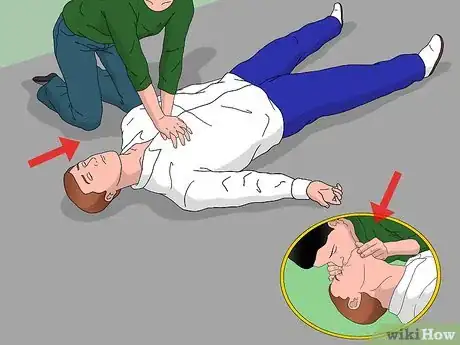
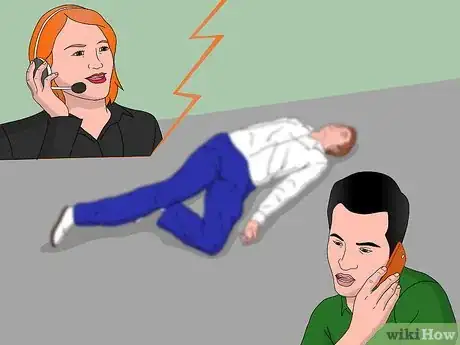
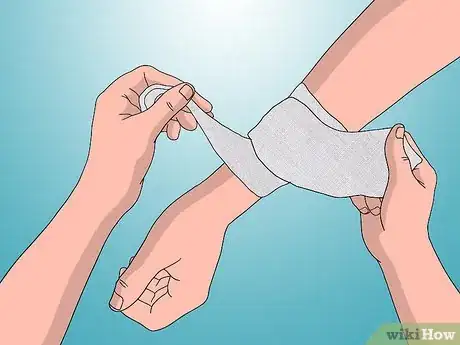

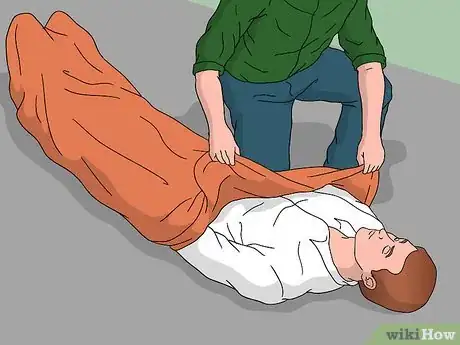



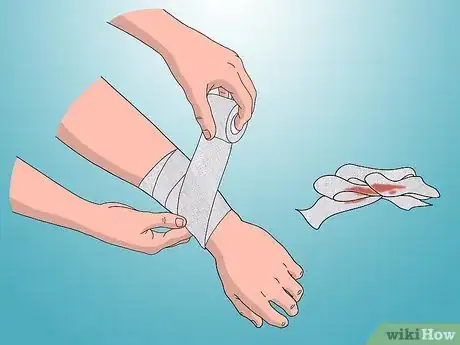
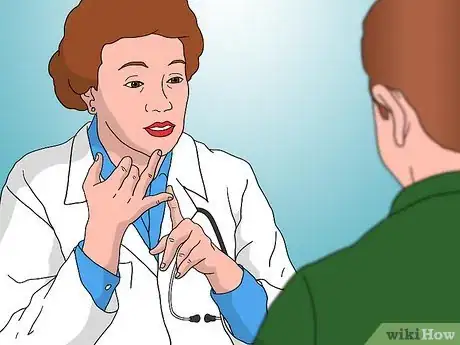
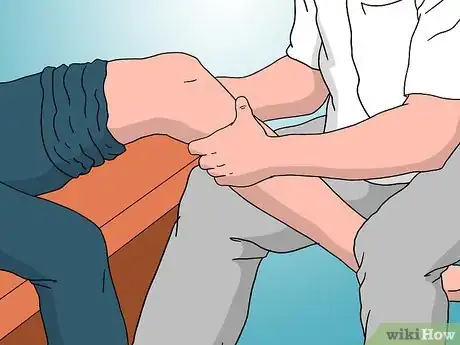
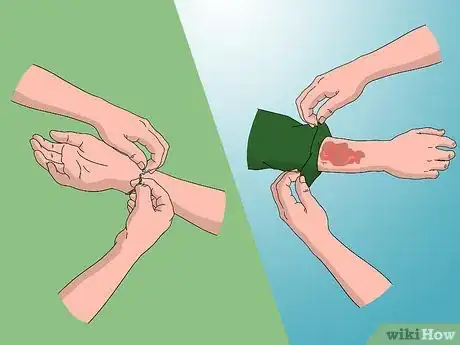
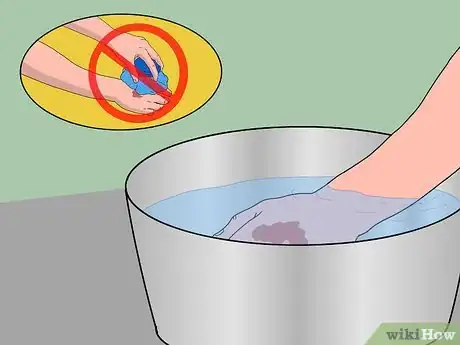

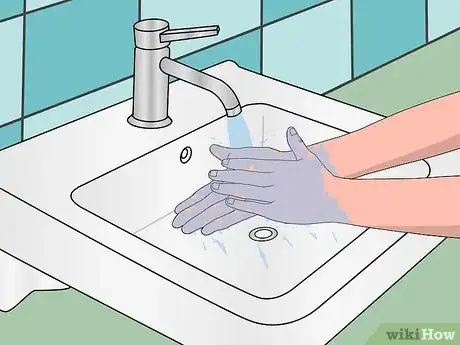

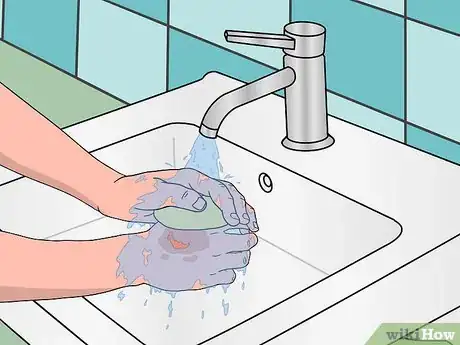
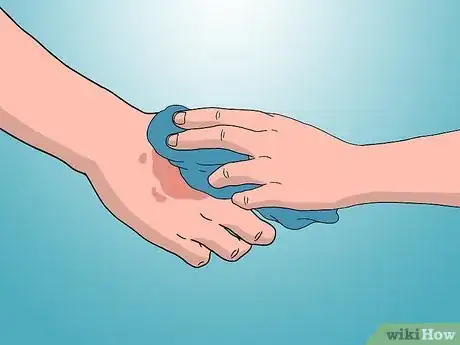
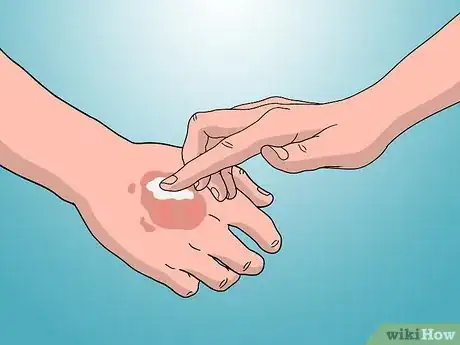



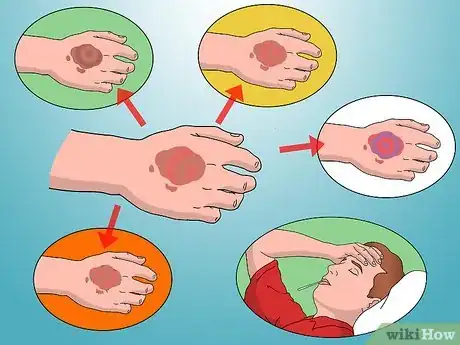
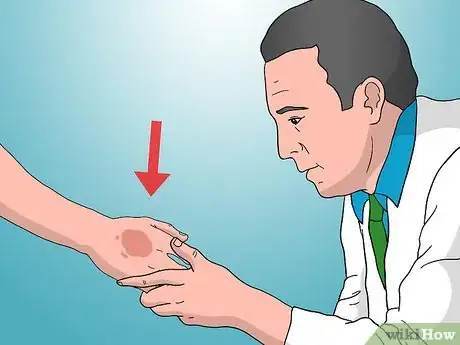
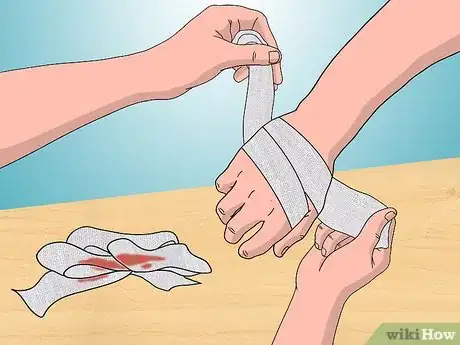

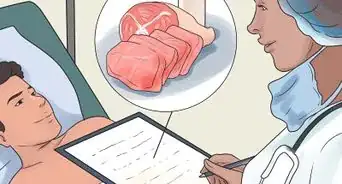
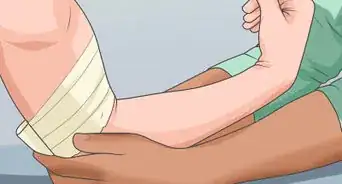
-Electric-Shock-Step-9.webp)
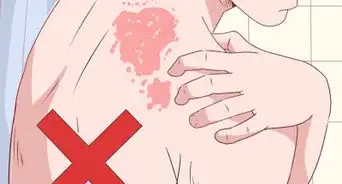





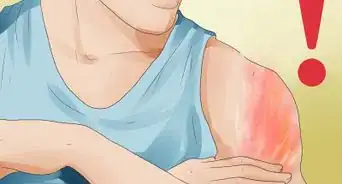

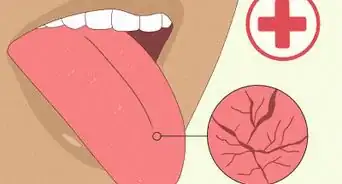
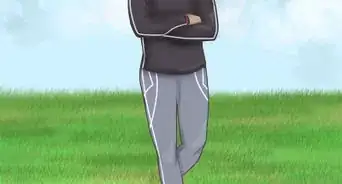








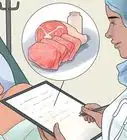

-Electric-Shock-Step-9.webp)



































Medical Disclaimer
The content of this article is not intended to be a substitute for professional medical advice, examination, diagnosis, or treatment. You should always contact your doctor or other qualified healthcare professional before starting, changing, or stopping any kind of health treatment.
Read More...